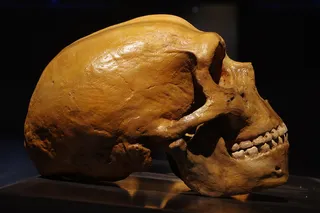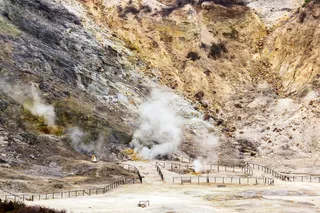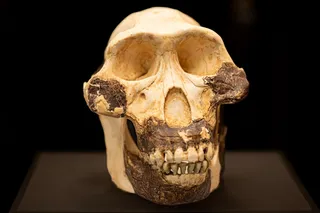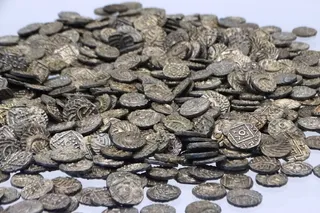Stonehenge practically radiates mystery. Who built it? Why? And how?
Now, there are some new questions: Why did the Altar Stone — a 6-ton cap for the neolithic monument — come from a site in Scotland about 450 miles away? And how was it moved from its mine to the Salisbury Plain site?
A team of scientists raised these notions in a Nature report that says the stone hails from Scotland, not Wales, as had been previously thought.
The Altar Stone
The implications are that the Altar Stone had special significance because all other rock elements of the circular stone formation come from either Wales or nearby. Construction began on the project about 5,000 years ago, in an area that was thought to have been home to hunter-gatherers.
The builders’ choice of stone varieties for different elements from a wide geographical area suggests that these were deliberate decisions.
“They were carefully curated from different parts of the U.K.,” says Anthony Clarke, lead author of the study and a graduate student with Curtin University of Australia. “It’s a fascinating question: why different stones from different places?”
Read More: How Hunter-Gatherers Used The Land Around Stonehenge
Transporting the Altar Stone to Stonehenge
To nail down the massive stone’s origins, the scientists conducted the geological equivalent of genome sequencing. They analyzed hundreds of minerals contained in the Altar Stone. Because the megalith is carved from sandstone, it is made of many minerals.
That specific combination of minerals, as well as information about how some of them have decayed, solidly matches the Altar Stone to rock from the Orcadian Basin in the northeast.
“We can say with 95 percent confidence level that it’s from the location in Scotland,” says Clarke.
So how did it get to southern England? Although there is no archaeological evidence of how the rock was transported, conditions from the time period point to sea travel. Back then, the island was a temperate rainforest. The land was likely muddy and heavily wooded.
Dragging a stone that far in those conditions seems unlikely, says Clarke. Moving it by ship would make more sense. Of course, if that was the case, the sailors would need navigation skills — likely informed by mathematics and astronomy.
Read More: Finding Monuments Beyond Stonehenge
Researching Stonehenge
Clarke has his own moving relationship to Stonehenge. He grew up in Mynydd Preseli, Wales, where some of Stonehenge’s stones came from. He first visited Stonehenge when he was a one year old. He analyzed a sample from the Altar Stone from Australia, then returned to the U.K. to conclude its study.
“You could say I’ve come full circle at the stone circle,” Clarke said in a statement. He calls working on this project, which he’s been indirectly connected to most of his life “a huge honor and a great experience.”
Now that the researchers know where the Altar Stone came from and have some ideas how it got to the Stonehenge location, they are still left with the “why” unanswered.
”That’s what makes Stonehenge so amazing and mysterious,” Clarke says.
Read More: Five Megastructures From The European Stone Age Still Around Today
Article Sources
Our writers at Discovermagazine.com use peer-reviewed studies and high-quality sources for our articles, and our editors review for scientific accuracy and editorial standards. Review the sources used below for this article:
Nature. A Scottish provenance for the Altar Stone of Stonehenge
Lead author of the study. Anthony Clarke
Before joining Discover Magazine, Paul spent over 20 years as a science journalist, specializing in U.S. life science policy and global scientific career issues. He began his career in newspapers, but switched to scientific magazines. His work has appeared in publications including Science News, Science, Nature, and Scientific American.














